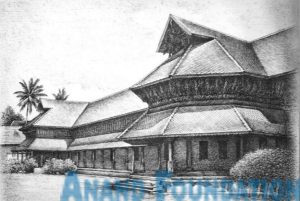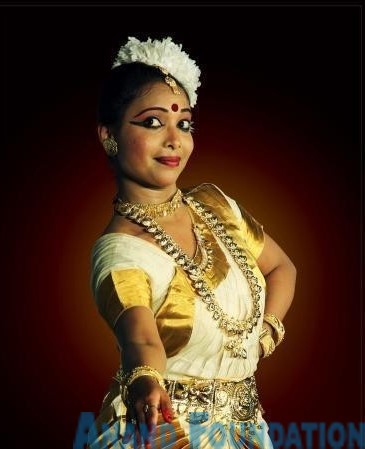Interview with Lavanya Devi on Sopana Sangeetham
Lavanya Devi
Lavanya Devi is one of the leading Mohiniattam exponent of her generation, who has been seriously pursuing Mohiniattam both as a performer and researcher for over a decade. Having learnt Bharatanatyam for many years under prominent gurus, Lavanya went onto learn Mohiniattam from the renowned Mohiniattam exponent Guru Prof. Dr. Deepti Omchery Bhalla. She is carrying on the tradition of legendary Guru Kalamandalam Kalyanikutti Amma from her guru. Lavanya is particularly known for her sensitive Abhinaya, and strong rhythmic command. Lavanya’s dance is noted particularly for its strict adherence to the style of her guru, known for its grace, depth of expression and technical perfection. Lavanya has performed in many important festivals and stages all over the
country. In addition to this, Lavanya has also conducted several Lecture- Demonstrations, Workshops, Seminars organised by SPIC MACAY. Lavanya is a graded artiste of National Doordarshan and has given several national programmes and interviews.
Lavanya has been bestowed with Sahitya Kala Parishad’s Senior Scholarship, Special Appreciation Award from Society for Upliftment of National Arts of India, Kalapratibha, Performer of the Year from Amrita Centre for Arts, Yuva Puraskaar, Delhi to name a few.
A post graduate in Commerce from University of Delhi, Lavanya is doing intense research in Mohiniattam as a Dance Faculty of Trikalaa Gurukulam, New Delhi. Currently, she is working as Assistant Professor, University of Kerala.
In Conversation with Smt. Lavanya Devi
- How would you relate Sopana Music and Mohiniattam?
It is a perfect direct relation. Actually, the basic foundation of Mohiniattam, we can say the soul of the dance form is Sopana music only. Both originated from the same land of Kerala. For an Art Historian, finding the relationship of Mohiniattam and Sopana Sangeetham is a topic of wide research and study. The aesthetic beauty of Mohiniattam is in its Sopana Sangeetham.
Q.2. Do you think there is a scarcity of compositions of Sopana music that could be used in Mohiniattam?
To some extent, Yes. Why because I find artsits are stuck with the same padams, ashtapadis and compositions which had been performing since long years by various artists, whole sort of repetitions. But that is due to their lack of Knowledge and quest for other compositions that originated in Kerala. I do agree that the classic so-called compositions should be performed but along with this, we have to see to other compositions. My Guru Deepti Mam and her mother, Leela Amma is doing extensive research on these grounds to unearth rare compositions, talas, ragas, and to incorporate the indigenous music system of Kerala into Mohiniattam.
Q.3. What is your opinion of using other genres of music in Mohiniattam?
Using Languages other than Manipravalam, Malayalam or Sanskrit in Mohiniattam would definitely boost up the reach of Mohiniattam to non keralites also, but when it comes to genre of music, I don’t agree with using other like Hindustani or Carnatic Varnams in their peculiar rendition in Mohiniattam as I am pretty sure that it won’t suit this dance form, you can take the composition, I mean the lyrics and can be adapted to Sopana Music fort choreography which I support and encourage. The beauty of this Dance form lies in its Music.
Q.4. Ashtapadi has been widely used in Mohiniattam.
Jayadeva’s Ashtapadi is something that has been used in other classical dance styles also, which would question a matter of repetitions but for Ashtapadis, there is something divine and mesmerizing which makes them more than a mere composition, but there are many levels of depiction that we can use while choreographing. I have seen some great dancers in Ashtapadi Festival in Delhi that the same ashtapadi taking various levels while depicting which solely depends on the Artist’s Creativity and Imaginative powers,
Q.5. Can we relate the using of Idakka in Mohiniattam as a sign of something evolved from Sopana Sangeetham?
I totally agree with this. Idakka is one of the principal instrument in Kshetra Sangeetham. The artistic marvalence of that instrument has been extensively used in Mohiniattam to deliver our expressions and emotions to the audience. As I already stated before, that Sopana Music is the foundation stone of Mohiniattam, we can very evidently say this.
Q.6. What sort of music and aspects you follow in your choreography?
I always prefer Sopana Music only, but the availability of resources is limited and the Sopana compositions that we hear today has a bit of Carnatic Influence also. But I always try my best to take Kerala Music and Compositions maximum.
Q.6. Your choreography has a wide range of compositions of Dr. Leela Omchery.
Yeah. Because she is such a legendary personality who had dedicated her life for Sopana Sangeetham only. She has unearthed very rare compositions and dwelled deep into finding and understanding metric talas and ragas of Kerala Music. Kalamandalam Kalyanikutty Amma, the mother of Mohiniattam has credited Leela Omchery for her contributions to Mohiniattam. Leela Amma’s incorporating Kerala percussion Vaitharis (Syllables) is something I found very unique and apt for Mohiniattam.
Q.7. What could be the new future perspectives of Sopana Music in Mohiniattam?
There are so many things we can do with Sopana Music in Mohiniattam. As I said, when we take lyrics of some other language we have to compose the tune for the same. By Sopana Music, we can take these lyrics into Sopana tradition by which I are not losing Mohiniattam’s integrity and at the same time, we can contribute to make Mohiniattam reach up to a huge Non-Malayali audience across the globe.
Q.8. Your advice for upcoming Mohiniattam Dancers?
It is not advice actually, I think it is our responsibility to not to meddle with other genres of music and don’t go for fame and name, thinking that people will accept this so I am compromising on its aesthetic values. I would say, go deep in search of such compositions and understand the music tradition that prevailed there and try to make something new out of that keeping the real aesthetics of any art forms.

Pencil Sketch of Kuthiramalika in Thiruvanthapuram by Mahesh

